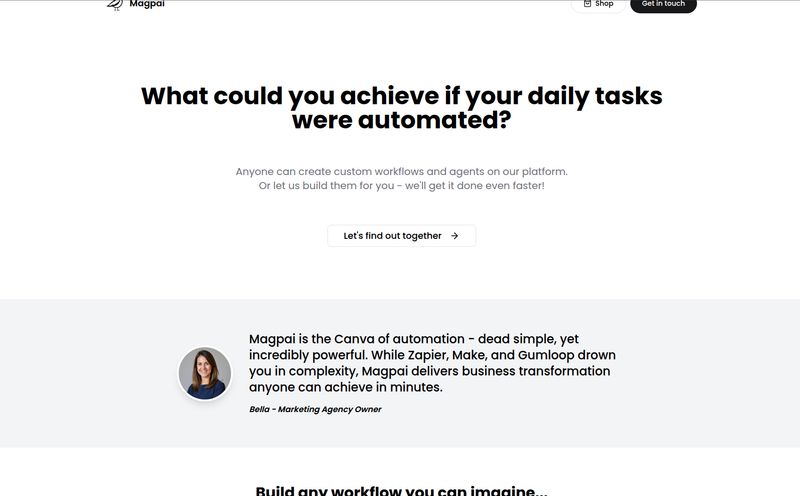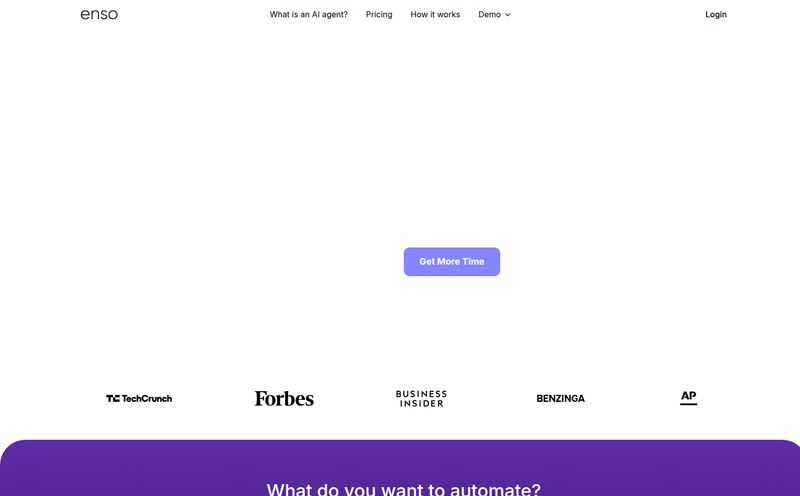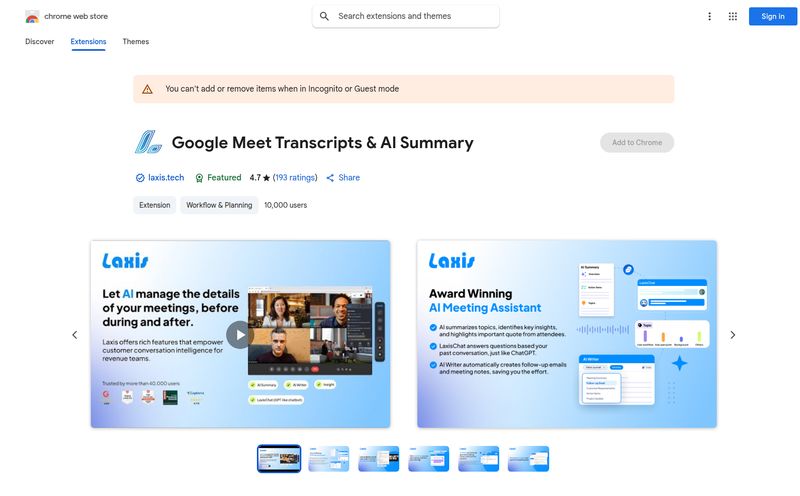We've all been there. Trapped in a beige conference room, sipping stale coffee, and being forced into some of the most awkward role-playing imaginable. You know, the kind where Susan from accounting has to pretend to be an irate customer and you have to “actively listen” while your soul slowly leaves your body. For years, this was the pinnacle of “soft skill training.” It was painful, ineffective, and everyone just wanted to get back to their desks.
I've always been skeptical of corporate training modules that promise to teach deeply human skills like empathy or leadership through a series of multiple-choice questions. It just doesn’t work. It’s like trying to learn how to swim by reading a book. You have to get in the water.
So when I first heard about Mursion and their pitch—using AI and immersive simulations to practice these very skills—my ears perked up. Could this actually be it? A way to practice the hard conversations without the cringey role-play? A flight simulator for human interaction? I had to take a look.
So, What Exactly is Mursion? (And Why Should You Care?)
At its heart, Mursion is an upskilling platform that combines artificial intelligence with real human insight to create shockingly realistic practice scenarios. Think of it less like talking to a chatbot and more like entering a virtual reality stage where you can rehearse a difficult conversation with a direct report, practice a sales pitch, or handle a delicate customer service issue. The people you’re talking to aren’t just pre-programmed bots; they’re powered by a blend of tech and trained human specialists who guide the simulation in real-time. That’s the secret sauce.
This isn't just for fun, either. It’s designed for L&D leaders, HR departments, and managers who are tired of throwing money at training programs that don't stick. The whole point is to provide a safe space to fail, get feedback, and try again, so when you face the real thing, it's not your first rodeo.
The Mursion Experience: More Than Just a Role-Play
The term “immersive simulation” gets thrown around a lot. But what Mursion is doing feels a bit different. It’s not just about a VR headset; it’s about psychological immersion. You’re presented with a scenario and an avatar on screen, and you just… talk. The avatar responds, reacts, and pushes back with unnerving realism.
One of their case studies with Best Western really caught my eye. They had a goal to improve guest satisfaction. Instead of another boring manual, they had their front desk agents practice difficult guest interactions in Mursion. One agent was quoted as saying it was “a much more fun environment” to be tested in. And fun is the gateway to learning, isn't it? When you're not tensed up and worried about judgement, you actually absorb the lesson.
This is where the platform's core features really shine. You get the AI-powered practice sessions for scalability, but then you get personalized coaching and data-driven insights. After a session, you’re not just told “good job.” You get a breakdown of what you did well and where you could improve. Did you talk over the person? Did you use enough empathetic language? The platform is tracking this, giving you concrete feedback you can actually use.

Visit Mursion
The Hard Numbers Behind Soft Skills Training
Look, I’m an SEO. I live and breathe data. Fluffy promises don’t do it for me; I want to see the numbers. And Mursion, to their credit, puts them right on the front page. And they're pretty compelling.
- 91% of learners report increased confidence after a simulation.
- 90% go on to apply the skills they learned on the job.
- 80% report a tangible change in their behavior.
That 80% figure is the one that stops me in my tracks. Getting people to actually change their behavior is the holy grail of any training initiative. It’s the difference between knowing you should ask open-ended questions and actually doing it in a high-stakes moment. That’s a massive win.
It’s probably why they’ve landed huge names like Coca-Cola, T-Mobile, and General Mills. Big companies don’t invest in tech like this unless they see a clear path to ROI. The Best Western case study even cited a $38K average annual ROI per General Manager and a 2-5% bump in guest satisfaction. That’s not pocket change.
The Good, The Bad, and The Realistic
No tool is perfect, and as a professional, I think it's important to look at any platform with a critical eye. So let's talk about the practical side of implementing something like Mursion.
The Good Stuff
The upside is pretty clear. You get realistic, engaging training that actually leads to behavior change. It’s personalized, scalable, and provides data to prove its worth. In a world where talent retention is everything, offering cutting-edge training that people don’t hate is a powerful way to keep your best people. You’re not just training them for their current job; you're future-proofing their skills for whatever comes next.
A Reality Check
On the flip side, there are practical considerations. First, this isn't a free tool. There's going to be an initial investment in setup and training. You've got to spend money to make money, as they say. Second, the platform's effectiveness hinges entirely on the quality of the simulation scenarios you design. Garbage in, garbage out. If your scenarios don't reflect the real challenges your team faces, the training won't be effective. Finally, you need buy-in from top to bottom. You can build the most amazing training tool in teh world, but if managers don't encourage its use and employees see it as just another corporate mandate, it'll collect dust.
Okay, How Much Does Mursion Cost?
Ah, the million-dollar question. I did what any good researcher would do: I hunted for the pricing page. And you know what I found? A beautifully designed 404 Page is not found error.
Honestly, I wasn't even mad. It’s classic enterprise SaaS. For platforms this complex and customized, you're not going to find a neat little three-tiered pricing table. The cost will depend on how many users you have, what kind of scenarios you need, and the level of support you require. The call-to-action is clear: Get a Demo. That’s your entry point.
My educated guess? You're looking at a custom quote based on a platform fee or a per-user/per-session model. But when you weigh that against the potential ROI—like that $38K figure—the conversation shifts from cost to investment.
Who Is This Really For?
While Mursion lists solutions for Leadership, Sales, Healthcare, and Education, I think it's more helpful to think about the person this is for. This is for the Head of L&D who is sick to death of seeing 90% completion rates on e-learning modules that teach nothing. It’s for the sales director whose team is brilliant at product knowledge but freezes when it comes to handling objections from a tough client. It’s for the hospital administrator who knows that empathetic communication can literally change patient outcomes.
If you're responsible for developing people and you believe that practice is what separates the good from the great, then Mursion is probably for you.
Mursion FAQs
How does Mursion's AI actually work?
Mursion uses a unique “human-in-the-loop” model. While AI drives the core interaction, there's often a live simulation specialist behind the scenes who controls the avatar's responses to ensure the conversation is nuanced, realistic, and tailored to the learning objectives. It’s the best of both worlds: AI's scalability and human emotional intelligence.
Is Mursion just for large enterprises?
While their client list features many large companies, the custom nature of their solutions suggests they might be able to create packages for smaller, fast-growing organizations. The only way to know for sure is to request a demo and have a conversation about your specific needs.
What specific skills can you practice with Mursion?
The range is broad but focuses on crucial “soft skills.” This includes things like giving difficult feedback, de-escalating customer conflicts, conducting inclusive interviews, leading team meetings, handling sales objections, and practicing empathetic patient communication.
How is this different from other VR training?
Many VR training tools are pre-programmed and follow a fixed script. Mursion is dynamic. Because of the human-in-the-loop element, no two simulations are exactly the same. The avatar can improvise and react to what you say, making it a much more realistic and challenging practice environment.
Can I actually measure the ROI of Mursion training?
Yes. The platform is built around data. It provides insights into individual and team performance, tracks improvement over time, and can be tied to real business KPIs, as seen in the Best Western case study which linked the training to improved guest satisfaction scores and financial ROI.
My Final Thoughts on Mursion
Coming back to that beige conference room… I think its days are numbered. Tools like Mursion represent a fundamental shift in how we approach professional development. We're moving away from passive knowledge absorption and toward active, practical skill-building. It's smart, it's data-backed, and most importantly, it treats humans as humans—complex beings who learn by doing, not by clicking through a slideshow.
It’s not a magic wand. It requires investment, thought, and commitment. But as a way to build a more confident, resilient, and emotionally intelligent workforce, Mursion is one of the most interesting platforms I've seen in a long time. It’s using AI not to replace us, but to help us become better versions of ourselves. And that’s a future of work I can get behind.



